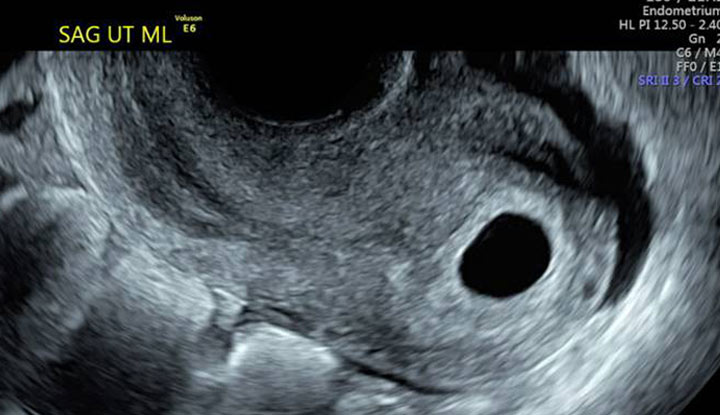
Pregnancy Symptoms and Blighted Ovum: A Comprehensive Guide
Pregnancy is a transformative journey that brings immense joy and anticipation. However, it can also be accompanied by a range of symptoms that can vary from woman to woman. Understanding these symptoms is crucial for expectant mothers to navigate their pregnancy with confidence and seek medical attention when necessary. One such condition that can occur during early pregnancy is a blighted ovum, which requires prompt diagnosis and management.
Pregnancy Symptoms
The onset and severity of pregnancy symptoms can vary significantly among women. Some may experience noticeable symptoms as early as a few days after conception, while others may not notice any changes until several weeks into their pregnancy. The most common pregnancy symptoms include:
- Missed period: The absence of a menstrual period is often the first indication of pregnancy.
- Breast tenderness: The breasts may become enlarged, tender, and sensitive to touch.
- Nausea and vomiting: Morning sickness, also known as nausea and vomiting, is a common symptom that usually begins around the fourth week of pregnancy.
- Fatigue: Extreme tiredness and fatigue are often experienced during the first trimester.
- Frequent urination: The increased production of hormones during pregnancy can lead to more frequent trips to the bathroom.
- Mood swings: Changes in hormone levels can cause emotional fluctuations and mood swings.
- Constipation: Hormonal changes and the relaxation of muscles can slow down digestion, leading to constipation.
- Bloating: The uterus begins to expand early in pregnancy, which can cause bloating and abdominal discomfort.
- Cramping: Mild cramps are common during the first trimester as the uterus grows and stretches.
Blighted Ovum
A blighted ovum, also known as an anembryonic pregnancy, occurs when a fertilized egg implants in the uterus but fails to develop into an embryo. The fertilized egg may stop growing or develop abnormally, resulting in an empty gestational sac.
Symptoms of a Blighted Ovum
The symptoms of a blighted ovum can be similar to those of a normal pregnancy, making it difficult to diagnose in the early stages. However, as the pregnancy progresses, certain signs may indicate a blighted ovum:
- Persistent vaginal bleeding: Heavy or prolonged vaginal bleeding that does not resemble a menstrual period can be a sign of a blighted ovum.
- Abdominal pain: Severe or persistent abdominal pain can be a symptom of a blighted ovum.
- Absence of fetal heartbeat: An ultrasound examination can detect the absence of a fetal heartbeat, which is a definitive sign of a blighted ovum.
- Low pregnancy hormone levels: Blood tests may show low levels of human chorionic gonadotropin (hCG), a hormone produced during pregnancy.
Causes of a Blighted Ovum
The exact cause of a blighted ovum is often unknown. However, certain factors have been linked to an increased risk of this condition, including:
- Chromosomal abnormalities: The most common cause of a blighted ovum is chromosomal abnormalities in the fertilized egg. These abnormalities can prevent the embryo from developing properly.
- Advanced maternal age: Women over the age of 35 have a higher risk of having a blighted ovum.
- Previous miscarriage: Women who have had a previous miscarriage are more likely to experience a blighted ovum in subsequent pregnancies.
- Underlying medical conditions: Certain medical conditions, such as thyroid disorders or diabetes, can increase the risk of a blighted ovum.
Diagnosis of a Blighted Ovum
Diagnosing a blighted ovum typically involves a combination of clinical examination, ultrasound imaging, and blood tests:
- Clinical examination: The doctor will perform a pelvic exam to check for any abnormalities in the uterus or cervix.
- Ultrasound imaging: An ultrasound examination can visualize the gestational sac and determine if there is an embryo present.
- Blood tests: Blood tests can measure the levels of hCG, which can help confirm or rule out a blighted ovum.
Treatment of a Blighted Ovum
The treatment for a blighted ovum typically involves removing the gestational sac and any remaining tissue from the uterus. This can be done through:
- Medical management: Medications can be used to induce miscarriage and expel the gestational sac.
- Surgical management: A procedure called dilation and curettage (D&C) may be performed to remove the gestational sac and any remaining tissue from the uterus.
Recovery from a Blighted Ovum
After the treatment of a blighted ovum, it is important for women to take time to recover both physically and emotionally. Physical recovery may involve rest, pain management, and monitoring for any complications. Emotional recovery may require support from family, friends, or a therapist to process the loss and prepare for future pregnancies.
Preventing a Blighted Ovum
While there is no guaranteed way to prevent a blighted ovum, certain measures can help reduce the risk:
- Maintaining a healthy weight: Obesity has been linked to an increased risk of blighted ovum.
- Managing underlying medical conditions: Controlling thyroid disorders or diabetes can help improve overall health and reduce the risk of pregnancy complications.
- Avoiding smoking and alcohol: Smoking and alcohol consumption can negatively impact pregnancy outcomes.
- Seeking genetic counseling: Women with a history of chromosomal abnormalities or multiple miscarriages may benefit from genetic counseling to assess their risk and explore options for future pregnancies.
Conclusion
Pregnancy symptoms can provide valuable insights into the progress and well-being of the pregnancy. Understanding these symptoms and seeking medical attention when necessary is crucial for ensuring a healthy and fulfilling pregnancy. A blighted ovum is a rare but potential complication that requires prompt diagnosis and management. By being aware of the symptoms, causes, and treatment options, women can navigate this challenging experience with confidence and prepare for future pregnancies with hope and optimism.